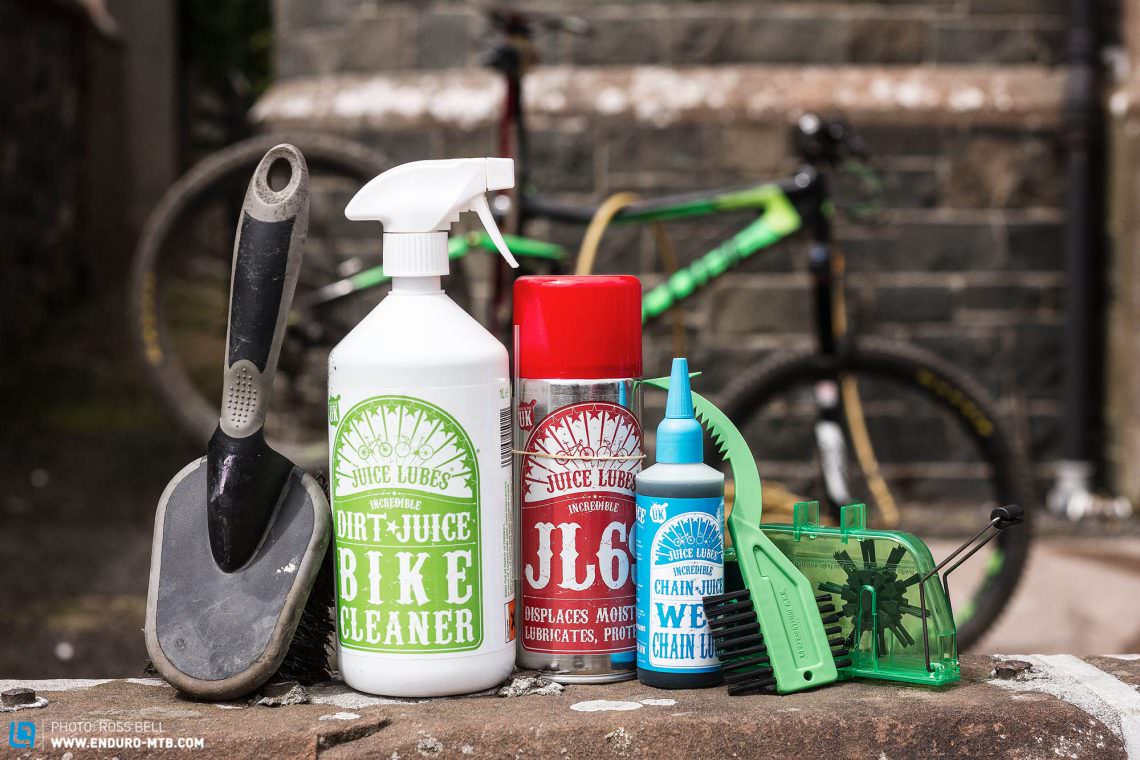Cleaning your bike bags is essential to keep them in working order and looking good. This article will show you how to do it properly with a step-by-step guide, as well as some tips on caring for your bike bags.
How often should you clean your bike bag?
If your bags are new, clean them no more than twice a year - once in the summer and once in the winter (Frequent cleaning will not only cause the materials to wear out prematurely but also damage leather parts).
If you use your bike backpack often and they become dirty quickly (e.g. for commuting), give your bags a thorough cleaning before storing them away at home after each use!
STEP 1. Cleaning the outside of the bag/s
- Rinse off any excess dirt using cold water. Scrub any particularly dirty areas with a sponge or brush - be sure not to use detergents or soap, which can damage your bag's exterior materials. Use large circular motions rather than long strokes so as not to weaken the seams. Always rinse out these sponges afterward so they don't attract more dirt! Dry each area immediately after washing them so that no residual moisture remains.
- When rinsing, take note of any areas where the fabric is fraying or wearing down. It could be time to either replace the bag or reinforce these areas with leather patches (available at most bicycle shops).
- If your bag has a few plastic parts (such as clips), be sure to wash these well using warm soapy water and a sponge/brush, then dry thoroughly before reattaching them to the backpack.
- Once your bag is clean and completely dry, wipe it with a soft cloth sprayed with leather conditioner - this step will nourish the exterior materials and help prevent them from drying out.
STEP 2. Cleaning the inside of the bike bag
- Remove all belongings from your backpack and turn it inside-out. Gently pull out any stubborn wrinkles using a steaming iron on a low setting over a clean towel over the surface of your bag. You can also hang your bag up to get rid of unsightly wrinkles before spraying it with a leather conditioner and wiping it down again with a soft cloth. If you have particularly stubborn dirt marks or grease stains, use a mild soap solution, rinse off quickly and follow with the leather conditioning step above.
- Spray about an inch area at a time (inside or outside) with a leather cleaner that does not contain a conditioner. Using a sponge or cloth, rub the cleaner into the fabric in small circles until it is distributed evenly; repeat this process for all areas you plan to clean, particularly focusing on stains. Try not to saturate your bag with any one particular area if possible - so spray generously but do not let the leather cleaner drip! Be sure to follow each step immediately by wiping down once more with a damp cloth/sponge and letting it dry before moving onto the next part of your cleaning regimen.
- Once all grime has been removed from your bags using soap solution, wipe them down again with a good quality leather conditioner that contains at least 10% wax content (this will help prolong the life of your backpack and protect it from water damage). Wipe the same areas again to spread the cleaner evenly. Allow to dry - this step should take less than 15 minutes.
Note: If your bag is particularly grimy, you might want to wipe the entire inside down with leather cleaner (without conditioner) before applying leather conditioner.
STEP 3. Cleaning any plastic parts
Rinse off any soap bubbles using a damp cloth/sponge and cold water if they have not completely dried yet. Do not use warm or hot water as this will soften these plastics over time! Once clean, dry off both the exterior and interior of each plastic part thoroughly so no moisture remains on either side before reattaching them to your backpack.

STEP 4. Lining/Rain Covers
- Line your bag with a thick, absorbent towel to prevent any moisture from seeping through the exterior fabric during this cleaning process. This is particularly important if you have an exposed zipper or other parts that are not waterproof! If you have a lining, remove it completely so it does not get wet.
- Spray the inside of your bag generously with a leather cleaner that does not contain a conditioner. Using a sponge or cloth, rub the cleaner into the fabric in small circles until it is distributed evenly; repeat this process for all areas you plan to clean, particularly focusing on stains. Try not to saturate your backpack too much if possible - so spray generously but do not let the cleaner drip! Be sure to follow each step immediately by wiping down once more with a damp cloth/sponge and letting it dry before moving onto the next part of your cleaning regimen.
- Once all grime has been removed from your bags, wipe them down again with a leather conditioner that contains at least 10% wax content (this will help prolong the life of your bag and protect it against water damage).
- Line everything backs up inside your backpack, making any adjustments by squeezing or pulling fixtures into place so they are just right. The goal here is to have an evenly distributed "cylinder" inside your bag without any creases or wrinkles, which can cause permanent damage over time - be careful not to over-stretch anything that is not meant to be elastic!
- Once your lining/rain cover is back in place, if you have one, zip up the closure and do a thorough final inspection of everything by feeling all inside seams and fixtures with your fingers or palms once it's been fastened shut. If something feels off, now may be the time to make any adjustments! Try on your bag as well - it should feel comfortable but firmly supported at this point.
Note: Depending on how dirty the interior of your bags is, there might be a considerable amount of moisture leftover from cleaning them - consider hanging them outside for a couple of hours just in case so they can fully dry before storing them properly.
Step 5. Cleaning leather straps
Follow the same process as outlined in Step 2 for cleaning any leather parts of your backpack; be sure to apply the leather cleaner with a sponge or cloth and not directly with your hands! Give special attention to areas where your skin may have come into contact with your bags, such as cinch straps and handles since these will likely contain oils from prolonged use over time.
After cleaning is complete, allow all leather parts to dry fully before reattaching them to your bag.
Tips on how to take care of your bike bag
- NEVER use wet wipes or paper towels to clean your bags! Not only will these cause any leather parts to discolor, but they may damage any waterproof coating - leaving you with a bag that no longer protects its contents against the elements!
- If there is anything inside your backpackthat cannot get wet (e.g. things wrapped up in newspaper), be sure to place an absorbent towel on top of it before spraying your cleaner so there are no accidental stains later on!
- When applying conditioner, make an effort to go over all seams and stitching holes because this helps increase water resistance by closing them up completely (seams should never fray or come apart
- Keep your bags clean and dry after each ride to ensure longevity and prevent permanent damage!

Final word
We recommend storing your bike bags in a spacious outdoor closet or other dry location inside a plastic backpack. This will not only keep them clean and free of grime, but it'll help prolong their life by keeping them out of direct sunlight (which may discolor the fabric over time) and dust (which can infiltrate leather parts). These measures are especially important if you do not plan to use your bags for an extended period of time in order to prevent any mold growth or rust damage.
Cleaning bike bags is rather straightforward when following these simple steps - always be sure to exercise caution when doing so because certain cleaners contain harsh chemicals that can damage delicate fabric! Try not to get too much moisture on sensitive areas like zippers and seams where wear and tear are most likely to occur over time, but if you follow the procedure outlined above carefully there shouldn't be any problems!